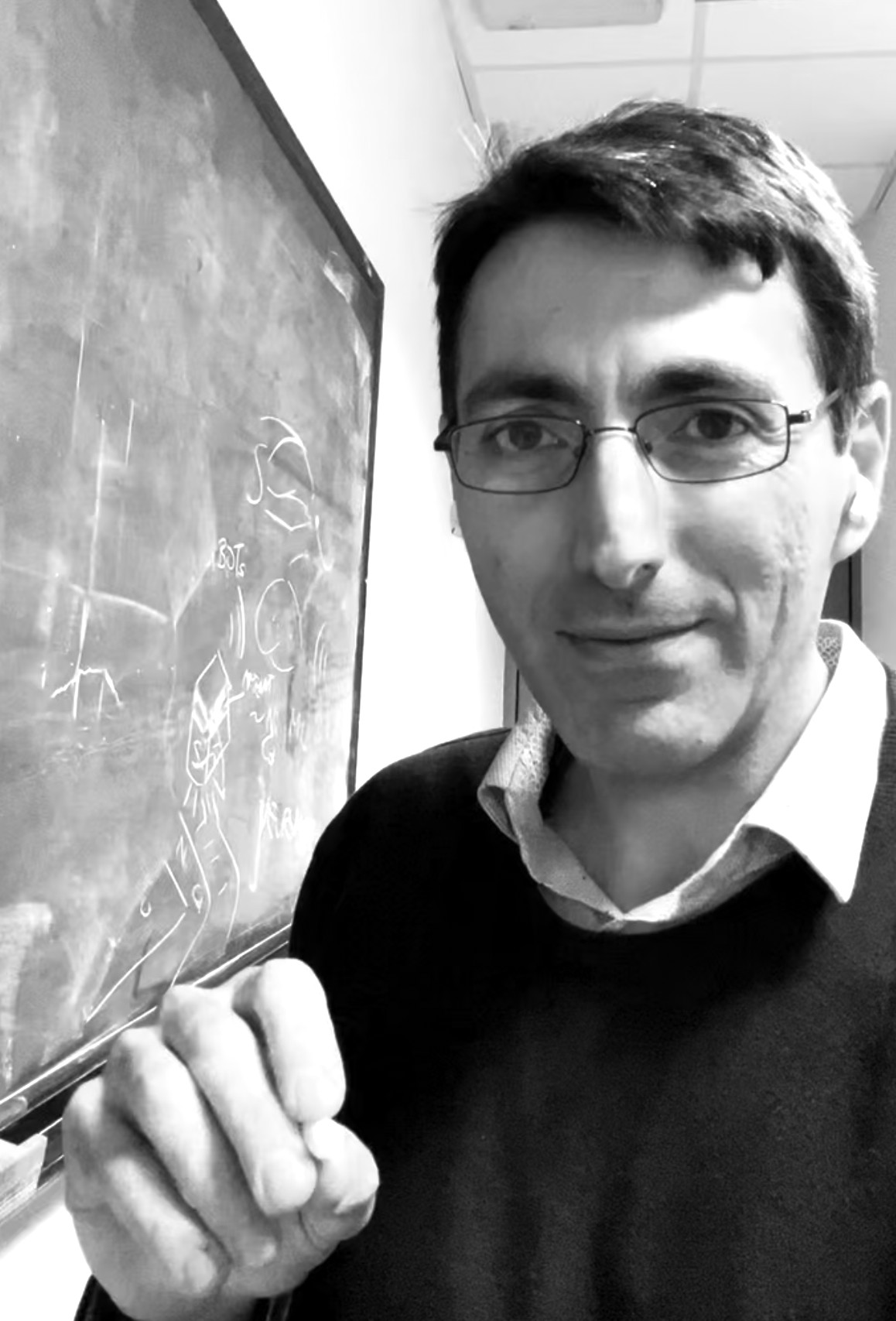Keynote lectures
Michele Giugliano, Univ. of Modena and Reggio Emilia, Italy
MG is Principal Investigator and Associate Professor of Bioengineering at the Univ. of Modena & Reggio Emilia (Italy), as well as Professor of Physiology at the International School of Advanced Studies, Trieste (Italy). His research lab is active in Neuroscience, Neuroengineering, nervous system modeling and high-tech cellular electrophysiology and focuses on two directions: A) the study of the molecular, cellular and tissue mechanisms underlying the functions of the brain; and B) the exploitation of technologies, methods, and quantitative approaches typical of physics and engineering to study, repair, recreate, or increase brain functions. In the space defined by these directions, during the past 15 years his lab was productive in the area of common overlap among cellular electrophysiology, computational neuroscience and Neurotechnology.

‘Broadband’ cortical neuronal ensembles Both in Neuroscience and in AI, the input-output transfer function of the units composing a large network is a pivotal element. Known as "activation function" (in Machine Learning) or as the frequency-current curve (in Neurobiology), it is a known mechanism of non-linearity as well as a biophysical primitive for neural computation. We also know that its knowledge is instrumental (in Computational Neuroscience) to analyse and predict the collective behavior of real neuronal circuits by mean-field theories. Finally, in experimental Neuroscience, the estimate of the frequency-current curve of nerve cells has been used for over three decades to classify and make sense of neuronal diversitys. However, such a static description is inadequate to interpret how microcircuits and large networks of the brain process time- varying stimuli. Early theoretical studies and late experimental work from our group and others revealed how probing single-cell dynamical response properties is necessary to interpret of ultra-fast ensemble responses and other collective network phenomena. In this talk, I will review the results on dynamical response properties of neurons and neuronal ensembles and put them into context of the findings of unexpected differences between rodent and human cortical neurons. Whether these generalised biological features should be also considered for (Neuromorphic) implementation of AI systems, based on spiking neural models, is a question I will leave open to the audience.
Ina Koch, Goethe University Frankfurt am Main, Germany
IK is a full professor of bioinformatics at the Goethe University Frankfurt Main, Germany. She holds a diploma in quantum chemistry and a PhD in theoretical computer science. Her research is mainly about graph theory‐based method development, focusing on A) computational systems biology and B) computational protein structure analysis. In area A), her group is establishing Petri net formalism to model biochemical systems, including metabolic systems, signaling pathways, and gene‐regulatory systems, such as the carbon metabolism in potato tubers or the signaling pathway downstream of the dystrophin gene in the Duchenne Muscle Dystrophy. Other Petri net models developed describe the xenophagic capturing of Salmonella in epithelial cells, TNFR1‐induced pathways, leading to cell survival, apoptosis, and necroptosis, cellular processes in the human lymph node, and, recently, the combined IL6/Il‐22 signaling pathway in mammalian cells. The group contributed to the field with new invariant‐based methods, such as the concept of manatee invariants, and developed new approaches for the in‐silico knockout analysis. In area B), the group models protein structures as undirected labeled graphs in a unique way at different levels of abstraction. Based on these graphs, classification and modularization techniques are applied. Recent work considers the generation of hypotheses of the assembly of protein chains to a protein complex.

Computational modeling at the molecular and cellular level: a Petri net approach to study in‐silico knockouts and dynamics of Salmonella infection The increasing amount of available experimental data enables us to consider biological systems at multi‐scale levels. Different computational methods, ranging from discrete techniques to differential equation‐based methods, have been developed to build models at various scales depending on the data and the experiment. The talk will address the possibilities and challenges of applying Petri nets to model and analyze biological systems. Starting with a brief discussion of current challenges in systems biology, we will introduce Petri net basics. To illustrate the theory, we describe a Petri net model of xenophagic capturing Salmonella in epithelial cells and its analysis, applying the system’s invariants and in‐silico knockouts. We used a stochastic Petri net to study the dynamic behavior of epithelial cells infected with Salmonella at different stages of the Salmonella infection, including the invasion of Salmonella into the epithelial cells by a cooperative strategy, the bacterial proliferation in the cytosol and the Salmonella‐containing vacuole, and the xenophagic degradation of cytosolic bacteria. The model captures the stochastic variation and heterogeneity of the Salmonella population in the cytosol and vacuole of a single cell over time. Finally, we will discuss the combination of Petri nets with agent‐based modeling as a future direction.
Clinical Keynote in collaboration with the ÖKG
Martin Manninger-Wünscher, Medical University of Graz, Austria
MM is a post-doc at the Department of Cardiology, Division of Cardiology at the Medical University of Graz. His research focuses on three topics in the field of arrhythmia research: 1) Translational electrophysiology: He is leading the translational electrophysiologic animal lab and investigates mechanisms on arrhythmia development and progression in large animal models. 2) Clinical research: Within the research team of Prof. Daniel Scherr, he conducts clinical trials around medical therapy and novel technologies in interventional arrhythmia treatment. 3) Digital Cardiology: Together with research partners at the University of Maastricht and University of Copenhagen, he investigates the role of new wearable technologies in arrhythmia detection and management. He is currently work package leader of the Ludwig Boltzmann Institute planning and conducting a nation-wide digital arrhythmia screening intervention "Austrian Digital Heart Program".

Bridging the translational gap in cardiology









